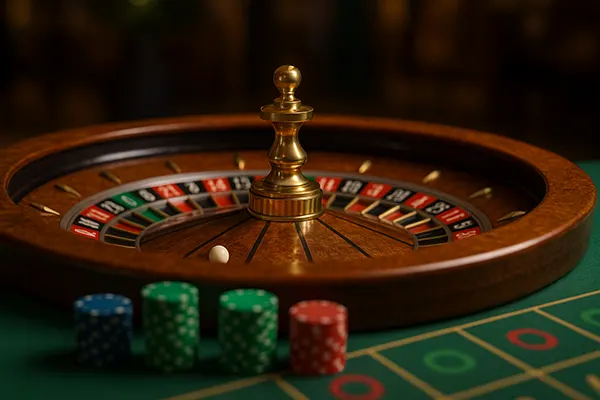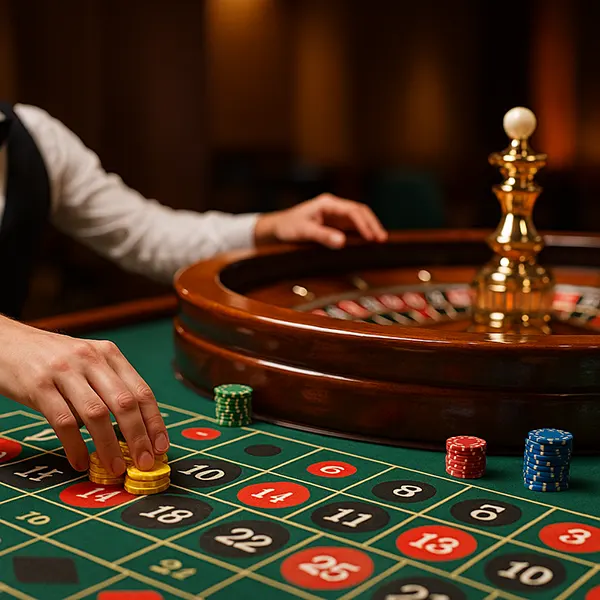
Real Roulette Play Scenarios with Player Decision Analysis
Roulette, a game steeped in centuries of history, continues to fascinate players across the globe. While it may appear to be a game of pure luck, decisions made by players often influence short-term outcomes. This article provides real-world scenarios of roulette sessions, breaking down the logic behind each move and explaining the reasoning behind the players’ choices. Based on simulations and real game footage, the analysis offers valuable insight into what goes through a player’s mind during critical moments of the game.
Conservative Strategy in Action
In one simulation, the player enters the game with a modest bankroll of €100 and opts for a conservative strategy. They place €1 bets exclusively on “even” outcomes, doubling the bet only after a loss — a variation of the classic Martingale approach. The aim here is not to win big but to maintain table presence while gradually accumulating small profits.
During the first ten spins, the player experiences a mix of wins and losses, finishing with a profit of €6. Notably, after a streak of three losses, they bet €8 on an even outcome, which wins and covers previous losses. They then reset to €1. This approach relies on discipline and avoids the emotional impulse to chase wins with high-risk bets.
After 30 minutes of gameplay, the player cashes out with €124, having never risked more than €8 per bet. While slow, this strategy illustrates how calculated discipline can lead to steady, if unspectacular, success at the roulette wheel.
Key Takeaways from Conservative Play
1. A strict system like modified Martingale offers predictability and reduces emotional betting. This method requires the player to follow predefined rules without deviation, which helps limit the temptation of random or irrational wagers. Because the system is based on mathematical progression, it instils a sense of control, even in a random game. However, players must be prepared for losing streaks and understand when to step away if limits are reached.
2. The player avoided inside bets entirely, eliminating higher risk options. By focusing solely on even-money bets like red/black or even/odd, the strategy minimises volatility and variance. This approach does not promise large wins but instead focuses on consistency and prolonged gameplay. It’s a pragmatic tactic that appeals to players aiming to stretch their bankroll while still having a structured plan.
3. The approach requires bankroll awareness and adherence to loss limits to avoid escalating stakes beyond control. One of the critical aspects of this strategy is maintaining a clear limit on how much one is willing to risk during a session. Without this discipline, even a mathematically sound strategy like the Martingale can quickly deplete funds. Setting a strict stop-loss point and sticking to a modest maximum bet size are essential for long-term success and mental composure at the table.
Mid-Risk Strategy: Sectors and Pattern Recognition
Another player applies a sector betting system, focusing on specific sections of the wheel like the Voisins du Zéro or Tiers du Cylindre. With a budget of €200, they bet €5–€10 on clusters of numbers in each round, using the wheel’s physical layout rather than the table layout as a reference.
The player notices a recurring outcome pattern every five to six spins, often favouring the left side of the wheel. Using this pattern recognition, they increase bets on Voisins and adjust based on each new result. After 45 minutes, the player ends the session with €264, thanks to three wins on straight-up numbers and multiple successful sector bets.
This mid-risk strategy rewards observation and adapts to short-term patterns. Though not scientifically predictive, such approaches can increase perceived control and engage players in dynamic decision-making.
Observations from Sector-Based Play
1. Pattern recognition is speculative but adds structure to otherwise random outcomes. While roulette is fundamentally a game of chance, players often try to find meaning in short-term trends. Recognising clusters of numbers landing in the same physical area of the wheel can guide bet placement, giving players a sense of strategy and control. Although these patterns do not guarantee results, they provide a psychological anchor that helps avoid entirely random betting.
2. Sector betting requires familiarity with the wheel layout and betting interface. It involves visualising where numbers lie on the actual roulette wheel rather than just on the betting mat. This knowledge allows players to cover interconnected sections efficiently, such as Voisins, Orphelins, or Tiers. The player’s ability to apply this knowledge effectively depends on both experience and attention to detail, particularly in live roulette settings with limited decision time.
3. The strategy involves moderate risk and demands consistent adjustment to remain effective. Since outcomes vary constantly, players must reassess their bet distribution after each spin. Sticking too rigidly to one area can lead to unnecessary losses. A balanced approach includes using chip allocation wisely, avoiding over-concentration, and adapting as new patterns emerge. This makes sector betting more dynamic than flat wagering and keeps the session engaging.

Aggressive Play: Chasing Multipliers with High Volatility
In a final case, a player enters a high-stakes table with €500 and bets aggressively on single numbers and inside combinations. They focus on chasing payouts from multiplier-enhanced numbers, common in certain modern roulette variations like Lightning Roulette.
On one notable spin, they place €10 on five different single numbers. One of the chosen numbers hits — with a 100x multiplier — resulting in a €1000 payout. Flush with winnings, they continue with volatile inside bets, hitting once more with a 50x multiplier, but then suffer four losses in a row.
Despite large swings, the player ends the session with €1280. This style is risky, often leading to either dramatic wins or rapid depletion. It’s unsustainable long-term but can result in short-term spikes when luck aligns with high-risk strategy.
Insights from High-Risk Sessions
1. High volatility strategies hinge entirely on short-term multipliers or straight hits. Unlike outside bets with higher probability but lower payout, single-number and inside bets offer massive returns, especially when multipliers are involved. These tactics rely heavily on variance, which means outcomes can vary wildly from one spin to the next. The success of such strategies is highly unpredictable, and even a long string of losses may be followed by a single winning bet that turns the tide. However, players must be prepared for prolonged downswings without guarantees of recovery.
2. Without strict loss limits, sessions can quickly spiral into heavy losses. The psychological pressure to continue playing after consecutive losses often leads to impulsive decisions, making bankroll management critical. Players engaged in high-risk approaches should predefine their exit points — both in terms of losses and gains — to avoid emotional betting. Setting hard caps and sticking to them separates strategic gamblers from reckless ones, especially in high-stakes games where each spin can drastically alter one’s balance.
3. Best suited for short play sessions with limited funds one can afford to lose. Aggressive roulette play is not sustainable over extended periods due to the game’s inherent house edge and volatility. These strategies are often pursued by players seeking a thrill or quick turnaround, not by those aiming for consistent profits. The entertainment value of high-risk play is undeniable, but it should always be approached with clear financial boundaries and realistic expectations regarding outcomes.
-
 Dragon Gold 88 Slot Review: Eastern Power ...
Dragon Gold 88 Slot Review: Eastern Power ...Dragon Gold 88 by Booongo is a captivating slot machine …
-
 Exploring the Magic of Pot of Fortune: A S...
Exploring the Magic of Pot of Fortune: A S...Delve into the enchanting world of Pot of Fortune, a …
-
 Golden Gallina online slot review
Golden Gallina online slot reviewWhen it comes to the world of online casinos, variety …
-
 Smart and Cunning, Famous Women in Poker
Smart and Cunning, Famous Women in PokerPoker, often perceived as a male-dominated realm, has witnessed the …
